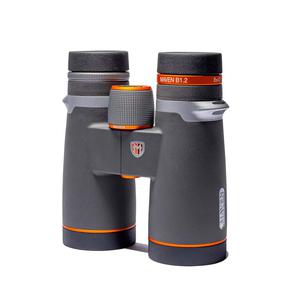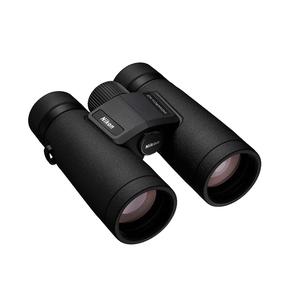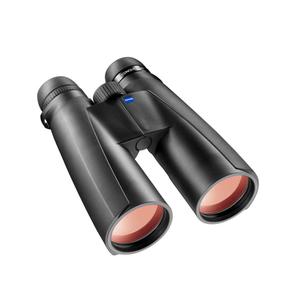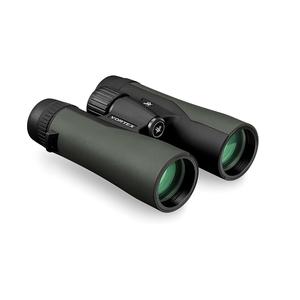Mastering the Adjustment of Binoculars
Binoculars, those incredible instruments that shrink the vastness of our world into clear, crisp images, are more than just a pair of lenses. They are gateways to the wonders of the distant universe, whether you're an avid birdwatcher, a dedicated hunter, a starry-eyed astronomer, or simply someone who loves to soak in the details of the world around.
However, the magic of binoculars lies not just in possessing them but in mastering their use. This guide aims to take you through a detailed journey of adjusting your binoculars, ensuring every distant speck becomes a vivid, life-like scene.
Short answer:To adjust binoculars, first, modify the eyecups based on whether you wear glasses. Next, adjust the hinge to align the barrels with your eyes. Then, use the focus wheel to sharpen the image. Lastly, fine-tune the view with the diopter for each eye individually.
- Understanding the Anatomy of Binoculars
- Step-by-Step Guide to Perfecting Your Viewing Experience
- Maximizing Your Binocular Experience
Understanding the Anatomy of Binoculars

Before delving into adjustments, let's acquaint ourselves with our binoculars. Imagine them as a sophisticated tool, elegantly simple yet intricately designed. At their core, binoculars consist of two telescopic tubes – the barrels – capped by the objective lenses. These larger lenses are like gatekeepers, drawing in the light and the very essence of the image before you. At the other end are the eyepieces, the smaller lenses through which your eyes meet the distant world.
Linking these parts are the prisms, silent correctors of our inverted world, ensuring that the topsy-turvy image received is righted before it reaches your eyes. And then there's the diopter, a small, often unnoticed ring on the right eyepiece, your personal focusing assistant, especially if your eyes demand unique focusing needs.
Let’s not forget the binoculars' spine – the hinge – allowing you to fold or widen the barrels, just like adjusting a pair of spectacles to the width of your eyes. And the focus wheel, a central, easy-to-reach knob, is your tool for bringing the distant world into sharp relief.
Step-by-Step Guide to Perfecting Your Viewing Experience

Eyecups: Your Gateway to Comfort
The eyecups are more than mere padding. They are your first point of contact with your binoculars, serving two crucial roles. Firstly, they ensure comfort, providing a soft, stable resting place for your eyes. Secondly, they block out pesky side-light, keeping your focus strictly on what lies ahead.
For glasses wearers, the eyecups need to be retracted, either by twisting or folding. This action brings your eyes closer to the lenses, ensuring a full field of view without the vignette effect. Without glasses? Extend those eyecups to keep a comfortable distance between your lenses and eyelashes.
The Hinge: Aligning Your World
Adjusting the hinge is akin to tuning a fine instrument. While looking at a distant object, gently move the barrels in or out. Your goal is to merge the two circular images into one seamless circle. It’s a bit like a magic trick – when done right, the two halves blend into a perfect whole, with no annoying black edges or overlapping images.
Focus Wheel: Bringing Life into Focus
The focus wheel is where the magic happens. As you gaze at a distant object, this wheel is your tool to bring it into sharp, crystal-clear focus. A little turn here, a small twist there – and the once blurry silhouette springs into vivid detail. It's a process of trial and error, and the reward is a brilliantly clear view.
Diopter: The Fine Tuning Tool
The diopter is your custom focus fixer. It's particularly handy if your eyes have different focusing needs. Start by covering the right objective lens and using the focus wheel to clarify the image for your left eye. Then switch – cover the left lens, and adjust the diopter for your right eye.
It’s like calibrating each eye, ensuring both work in harmonious focus. Should you be seeking intriguing binocular models, we've compiled our top 4 best binoculars of 2024 for you:
- High-End Performance at Affordable Price
- Ideal for Hunting, Birding, and Wildlife Viewing
- Enhanced Low-Light Performance
- Tack-Sharp Edge-to-Edge Vision with Deep Field
- Compact and Lightweight with Improved Light Transmission
- ED Glass Lenses Minimize Distortion
- Ideal for Birding and Wildlife Observation
- Rubber-Armored, Non-Slip Grip Design
- Waterproof and Fog-Proof for Reliable Performance
- Turn-and-Slide Rubber Eyecups for Eyeglass Compatibility
- HD Lens System for Vivid Imaging
- Best for Birdwatching and Nature Observation
- LotuTec Coatings for Scratch Protection
- Conveniently Placed Focusing Wheel for Easy Use
- Perfect for Stalking Game and Rough Terrain
- Exceptional Clarity and Color Fidelity
- Resistant to Water and Fog
- Eyecups Adjustable for Eyeglass Wearers
- Secure, Non-Slip Rubber Armor
- Includes GlassPak Harness for Easy Carrying
Maximizing Your Binocular Experience
Now, with your binoculars perfectly adjusted, the world awaits your gaze. Remember a few key practices for an optimal experience:
| Practice | Description |
|---|---|
| Secure Your Binoculars | Always use the strap to prevent accidental drops and damage. This is a simple yet effective way to protect your investment. |
| Safe Storage | When not in use, store your binoculars in a protective case. This safeguards them from dust, moisture, and impacts. |
| Cleaning Rituals | Clean the lenses regularly with a soft cloth or a specialized cleaning kit. Avoid using fingers or abrasive materials to keep the lenses scratch-free. |
| Viewing Etiquette | Aim your binoculars responsibly. Avoid looking directly at the sun or intense light sources, as this can harm your eyes and the binoculars. |
| Gentle Adjustments | Handle all adjustable parts of the binoculars with care. Overzealous adjustments can cause damage, so always turn knobs and adjust hinges gently. |
Conclusion: Embracing a World Beyond Reach
As you step out with your binoculars, remember that each adjustment, each turn of a knob, brings you closer to the beauty and mysteries of the distant world. Whether it’s the feathers of a bird perched atop a distant tree, the rugged terrain of a far-off mountain, or the tranquil dance of stars, your binoculars are your bridge to these experiences.
Happy viewing, and may each glance through your binoculars reveal another wonder of our incredible world.
You may also like:




